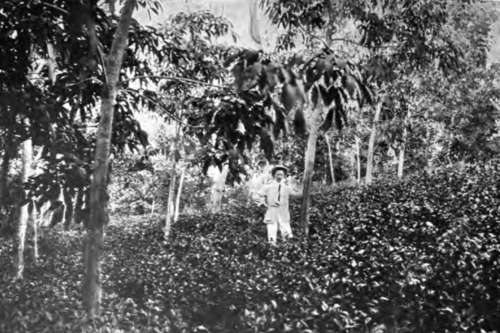Intercrops
Description
This section is from the book "Rubber And Rubber Planting", by R. H. Lock. Also available from Amazon: Rubber And Rubber Planting.
Intercrops
If wide planting be adopted, some kind of intercrop seems to be desirable in order that some revenue may be obtained during the period before the rubber comes into full bearing. In Ceylon, tea is commonly used for this purpose, or more frequently the rubber is planted at wide intervals through existing fields of tea. In this case the growth of the rubber must be expected to be slow. Rubber has also been planted somewhat widely through cacao, but this practice is objectionable owing to the identity of several diseases to which the two crops are subject, notably canker. Cotton has been suggested, but the climates required by the two crops are widely different, since a prolonged dry season is necessary for the successful harvesting of the fibre. In Sumatra and Java coffee is frequently grown in conjunction with the early stages of rubber, and many other crops have been suggested. Amongst these, Indigo is one which seems to deserve more attention than it has hitherto received. Indigo is an efficient gatherer of nitrogen, and in the case of this crop practically the whole of the materials removed from the soil, together with the additional nitrogen, can be returned in the so-called seet in a readily available form. Indigo cultivation however requires special knowledge and appliances, and these it might not be worth while to introduce, owing to the comparative shortness of the period available before the shade of the rubber prevents the further growth of such a crop.
Schidrowitz and others consider that no intercrop has yet been proposed which will give a return greater than the relative loss occasioned by the slower growth of the rubber, so long as the price of rubber remains high. The question is not however finally settled, and much depends upon whether it is decided to plant the rubber trees at the distance at which they will finally stand, or to adopt close planting and subsequent thinning of the plantation.
Plate VI

Hevea Rubber and Tea
Photo C. Northway
If the growing of an intercrop is decided upon, care must be taken to allow plenty of space for the growth of the rubber in its early stages. As the trees develop, the shade of the rubber will generally bring the life of the subsidiary crop to a close after it has served its purpose. All traces of the latter must then be cleared away, and no dead remains be left to serve as a centre for the spread of fungus diseases.
Continue to:
- prev: Weeding
- Table of Contents
- next: Cultivation And Manuring
